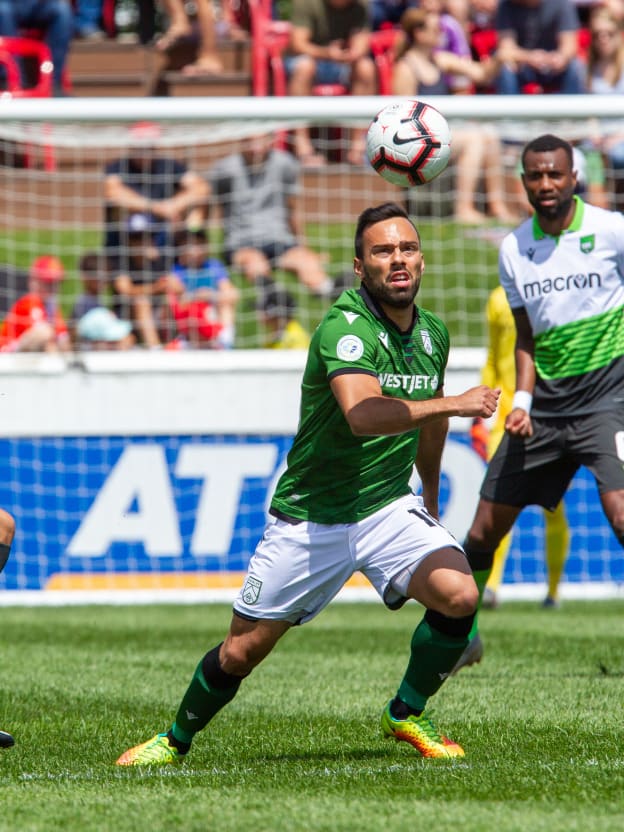Central midfield is regularly identified as the area of the pitch where the magicians roam. A 360-degree vision is available for players in this area, and therefore a greater variety of attacks that can be generated. Even for a side that loves to be direct, a variety of attacking angles means a larger array of threat against the opposition. In short, if you’re well set up in midfield you have a higher chance of scoring heaps of goals. Especially in the zone approximately 10-15 yards above the 18-yard box, everything is possible: a shot with low back-lift, some tidy combination play, or even an incisive through ball from here can be the makings of a goal. The players that work well in these positions are so valuable that many cultures even have a name for them. The Italians say trequartista. The Spanish use the term enganche. The English, at the moment, call them De Bruyne. Whatever they are called, technicians in midfield are worth their weight in gold. For instance, analytic research in the game has shown that the through ball is one of the most dangerous passes. Just short of 70 per cent of through balls lead to a shot in the same attacking move, and approximately 60 per cent assist shots directly. It takes around five completed through balls to generate a goal. To put that in context, it usually takes about 200 completed passes and 25 attempted shots to produce a goal. The CPL’s top three attacking sides have selected very different types of midfielders to pull the strings, especially in the advanced playmaker role. Let’s have a look…
Forge’s Classic No. 10’s
Forge FC coach Bobby Smyrniotis is spoiled for choice with both Tristan Borges and Kyle Bekker as perfect cut-outs of the advanced playmaker type. Small, technical, and ultra-mobile, Borges was formerly at Dutch club Heerenveen, and is a product of the TFC Academy. Bekker – a former Toronto FC first-team player and product of Smyrniotis’ Sigma Academy in Mississauga – has similar attributes, able to quickly unmark and find the correct receiving position at the perfect time to execute the next forward action. Both players have an instinctive sense for when to drift into the area between defensive lines, pivot to provide a crucial through ball, drive at the opposition’s backline to shoot, or even move into wide areas to overload or act as an auxiliary wide player. Smyrniotis sometimes plays two playmakers ahead of a single pivot in a typical 4-3-3 shape (as he did in Forge’s recent game versus Cavalry FC), but he has also worked with two deep-lying holders, such as Giuliano Frano and Kwame Awuah in a recent fixture away to Pacific FC.
Cavalry’s Iron Spine
Cavalry FC’s identity is clear at this stage: hard pressing in all areas, a swift transition to attack, and an attention to detail on attacking set-pieces. Their consistent choice of robust central midfielders reflects this philosophy. Regardless of whether Joel Waterman, Elijah Adekugbe, Nik Ledgerwood, Sergio Camargo, Julian Buscher or Oliver Minatel are deployed in the central unit, the goal is simple out of possession: suffocate the opponent any time they have the ball. Ledgerwood and Waterman personify the ideal through hard graft and positional discipline, while both are capable of breaking lines with intelligent passing. Although Camargo has recently been out of the team, Buscher and Minatel have filled the void as impressive creators. Buscher’s shuttling No. 8 role, working box-to-box to press alongside his attacking midfield counterpart, frees him up to go beyond the front three, especially into the gaps created between opposing fullback and centre back. He was particularly effective at this type of movement in the 8-0 dismantling of Valour FC. Minatel occupies a No. 10 role that is not a playmaker in the classic sense. His robust work off the ball to create space and attack central areas between the centre backs makes him more like an opportunistic second forward. He’s constantly playing off the number nine, whether that be Jordan Brown or Dominique Malonga.
Pacific’s Fluid Three
With Alexander Gonzalez, Alessandro Hojabrpour, Noah Verhoeven, Matthew Baldisimo and the new loan signing from Whitecaps, David Norman, coach Michael Silberbauer has an enviable mix of well-rounded young midfielders at Pacific FC. And this, perhaps, is the curse as well as the blessing. Rather than play with out-and-out holding or attacking midfielder specialists, Pacific often rotate their three players in the middle, looking to dominate possession in this area through constant movement. But where Hojabrpour, Gonzalez and Baldisimo excel in deep roles, focused on keeping the team in possession and the ball circulating, the creative element between-the-lines can go missing. Pacific often favour service from operators in wide positions or direct balls to get the towering Marcus Haber or the prolific goal-scorer Terran Campbell on the ball. And who can blame them with Campbell’s league-leading output? In terms of a “Plan B” through clever advanced midfield play though, Pacific has some emerging options. In the recent match against Forge, Norman rotated well into an attacking role at times – creating one of the best moves of the game – and Issey Nakajima-Farran was very effective when brought into a playmaker role. Indeed, these two players set up two of Pacific’s best late moments, including Campbell’s equalizer.
